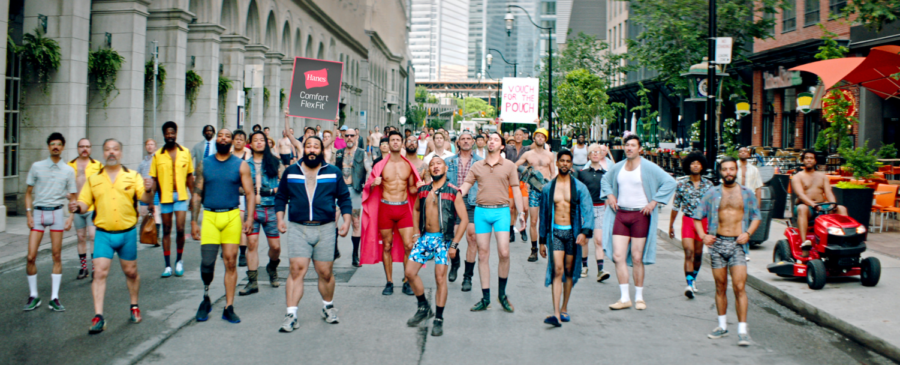Advertising trends for men’s underwear
The new “Every Bod” campaign from Hanes might be the most inclusive advertising seen in regards to men’s underwear.
December 1, 2020
Once upon a time, the simple question was: boxers or briefs? Nowadays, it’s a bit more complicated. Women’s lingerie has been an extremely profitable industry with far more variety in the type of underwear marketed toward women when compared to men’s undergarments. But as of recently, mens underwear has grown to be more important, and the men’s lingerie market has started expanding.
Rihanna released her Fenty X Savage men’s underwear collection Oct. 2. Since its release, the collection — featuring boxers, briefs, boxer-briefs, pajama sets and robes — has sold out in most sizes. Before the drop of her menswear line, Rihanna had created a women’s lingerie line that has been extremely successful since its debut in 2019.
Fenty X Savage lingerie has been available in a wide variety of sizes and used models in the fashion show that are not traditionally who you see walking the runway. The brand’s attempt to be more representative with their advertising was very successful. Rihanna made sure not to deviate from this when releasing her men’s line.
But before recently, men’s underwear has been under the radar.
Is this market too niche to be successful? Or will there be a future demand for more color, styles and variety in men’s underwear?
The women’s lingerie industry successfully markets women’s underwear to both men and women, but few advertising campaigns for men’s underwear have women as their target audience. The sexualization of men’s underwear is something we see less of in comparison to it being marketed as a practicality.
Since 1982, Calvin Klein has used male models such as Tom Hintnaus, Mark Wahlberg and, more recently, Justin Bieber to market men’s underwear as something that is sexy. In addition to the campaign itself, there is also a social media trend that their followers can interact with by using the hashtag #inmycalvins.
When it comes to the models in the advertising campaigns, however, Calvin Klein is selective with who they choose to model and the expectations their models must meet, men and women alike. In 2004, we saw Dove’s Love Your Body campaign that was started by Dove’s Self Esteem project. The Dove Self Esteem project aims to build confidence in women and young girls. After its launch, we saw a push for more inclusive advertising for almost everything marketed to women. Hygiene products, birth control pills and underwear all saw a wider representation of women in their advertising.
Despite Dove being at the forefront of inclusive marketing for women, they have not had similar campaigns that promote body positivity for men. Men’s clothing and underwear advertising still lacks the representation of bodies that are “normal” or inclusive of different-sized bodies, racially minoritized communities and disabilities.
Is there a reason why prominent brands have opted out of having more representation in marketing toward men? Perhaps a little shockingly, Axe was one of the first major brands to dip their toe into inclusive advertising for men with their 2016 “Your New Magic Commercial.”
Recognizable women’s underwear brands have made an effort to be more inclusive with their models, even by doing so indirectly. Victoria’s Secret has confirmed they will not air their famous fashion show in 2020 and will focus on evolving the market of Victoria’s Secret instead, and the brand AdoreMe has become very popular since its launch in 2012 as an affordable and inclusive lingerie retailer.
Hanes recently launched their “Every Bod” campaign, which might be the most inclusive advertising seen in men’s underwear yet. Hanes is attempting to redefine associations their audience may have with masculinity and looking a certain way.
As mainstream media becomes more comfortable redefining traditional roles of masculinity and more prominent brands try to be more inclusive in men’s marketing, we may start to see a change in the way men’s clothing is marketed and advertised.







